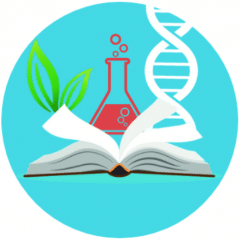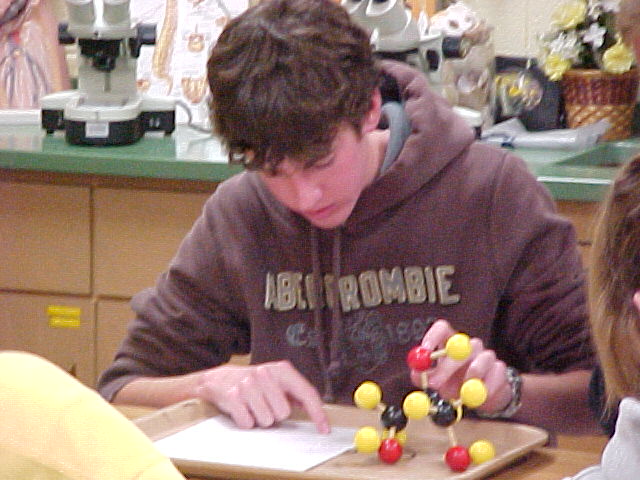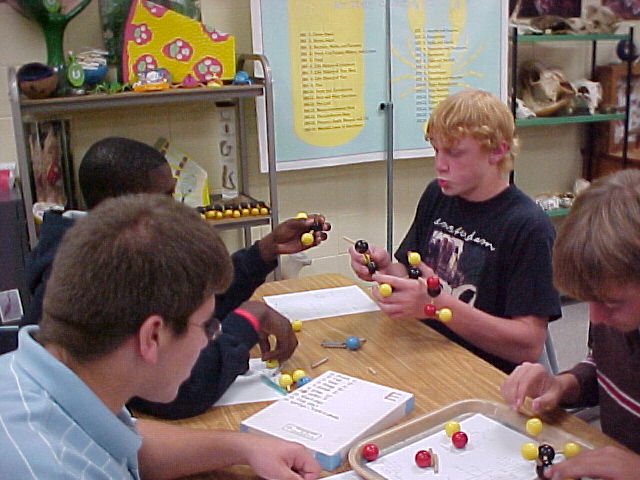First Semester Test 2006 Study Guide
1. What is the study of life called?
2. Instructions for traits passed from parent to offspring?
3. Keeping things stable or the same in cells?
4. Smallest units that can carry on life?
5. All living things require _________ for metabolism.
6. All living things are made of __________.
7. Salamanders with curved tails in polluted water are an example of which part of the scientific method?
8. The smallest part of carbon with all the same properties is called?
9. Where are electrons found in an atom & what is their charge?
10. When electrons gain energy they move to _____________________.
11. How many covalent bonds can carbon form?
12. Compounds may form from the transfer or __________ of electrons.
13. What happens to ionic compounds when placed in water?
14. Ionic bonds form from the ____________ of electrons.
15. Covalent bonds form from the ___________ of electrons.
16. What element do all organic compounds contain?
17. Give several examples of carbohydrates.
18. In what from do animals store glucose?
19. What are the monomers for proteins?
20. Is the following model a carbohydrate, lipid, or protein?

21. Sketch a fatty acid chain found in lipids.
22. What type of fatty acids contains double bonds?
23. Name the 2 nucleic acids.
24. When the volume of a cell increases, what happens to the surface area?
25. How does a prokaryotic cell differ from a eukaryotic cell?
26. What’s the job of the plasma membrane?
27. Parts of cells performing specific functions are called?
28. The ER sends proteins & lipids it makes to the __________ to be modified.
29. The Golgi ships & receives cell products in transport ___________.
30. In what organelle is ATP produced?
31. Ribosomes make ____________.
32. All eukaryotic cells have a ___________ containing the genetic material.
33. Diffusion occurs in what direction?
34. What is osmosis?
35. Ink dissolving in water is an example of _____________.
36. Riding of cell wastes in sacs is called _____________.
37. What is the effect of placing a plant into a hypertonic solution?
38. What is the ultimate energy for life on Earth?
39. Grana are suspended in the _________ of chloroplasts.
40. ____________ absorbs light energy for plants.
41. What happens to chlorophyll’s electrons when they absorb sunlight?
42. What is the source of oxygen in photosynthesis?
43. What gas is a byproduct of photosynthesis?
44. What type of skeleton do insects have?
45. The Calvin cycle occurs in what process?
46. The breaking down of food to release energy is called?
47. __________ builds up in heavily exercised muscles.
48. Name the 3 parts of cellular respiration.
49. How many chromosomes are in a human egg or sperm cell?
50. DNA compacts itself by wrapping around ____________.
51. How do insects help crops?











